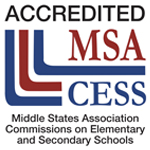
The United States of America will have the most diverse population by 2025, such that most states will have no representative ethnic majority. Instead, it will truly be a multicultural nation. Therefore, schools need to be prepared to be more culturally mindful and embrace more synergy among the diverse student population. For example, middle class Americans provide children with home experiences that align seamlessly with school readiness. However, many eastern cultures emphasize a balanced, holistic approach to life where being part of the larger community and upholding the cultural practices is equally important. For many American families, the only access to college is through a sports scholarship, and, therefore, sports activities after-school play a dominant role. This is contrary to many eastern values where after-school academic activities and tutors supplement school learning.
Over the last few months, students and alumni across the country have used social media to showcase that many schools still operate from a dominant euro-centric viewpoint, with people of other cultures and multilinguals and people of color being viewed with a deficit perspective. Diversity in schools should not end with recruitment efforts. It should include efforts at fostering a sense of community where each person, irrespective of color or race, feels they are part of it. This requires each stakeholder to exercise more effort in understanding each person, their culture and historical predisposition, so that we can put everyone’s behavior within context.
As part of the new special report, “Big Ideas for Confronting Racism in Education,” Ed Week Research Center wanted to know how educators thought and talked about equity in schools. Are schools doing enough to bridge the equity gaps? Have the Black Lives Matter protests of the past several months shifted the opinions of teachers, principals, and district leaders as to what an “anti-racist” education looks like? And, do they have the preparation and resources they need for that work? Here are some key takeaways about the state of equity in education.
Note: 80 percent of educators polled were white, and there were not enough responses from people of any other race or ethnicity to provide a further breakdown beyond “nonwhite.”
In conclusion, one can say that in order to facilitate true social inclusion we need to examine the entire ecological system, from policies, teacher education, school culture and mission, and societal practices at the family level. Unless, we address key issues related to multicultural inclusion, social equity remains a daunting task.
Source: Edweek Research Center, 2020








